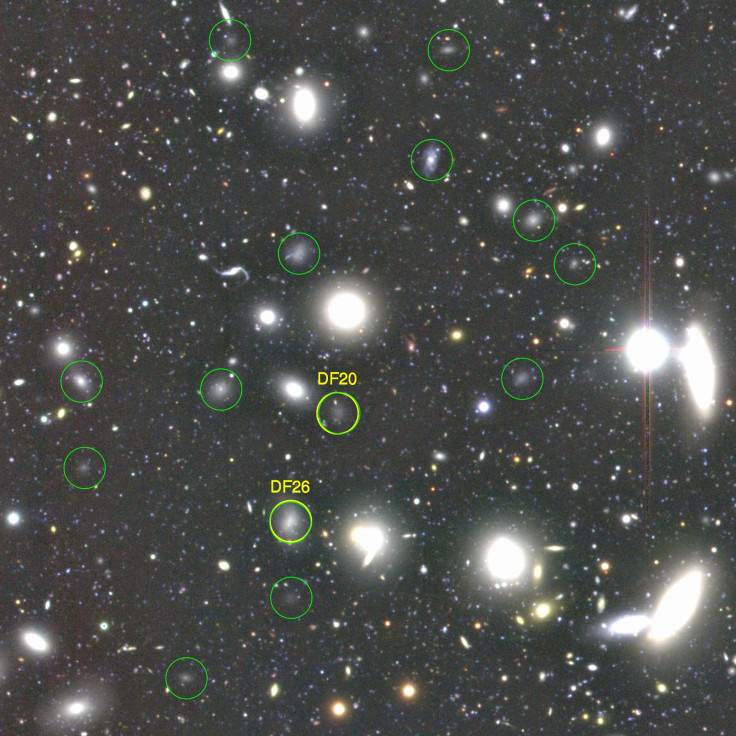Ultra-Dark Galaxies: More Than 800 Of Them Detected In The Coma Cluster

“Dark galaxies,” as the name suggests, are made primarily of dark matter. And, given the elusive nature of this exotic matter that constitutes nearly 27 percent of the entire universe, they have been extremely hard to detect.
Now, a team of researchers from the Stony Brook University in New York and the National Astronomical Observatory of Japan have discovered 854 “ultra-dark galaxies” -- containing only one-thousandth of the stars present in the Milky Way -- in the Coma cluster, located over 320 million light-years from Earth. The discovery, made using the Subaru Telescope at the Mauna Kea Observatory in Hawaii, indicates that these galaxies are dark because, during their formation process billions of years ago, they lost the gas needed to create new stars.
“The findings suggest that these galaxies appear very diffuse and are very likely enveloped by something very massive. … We believe that something invisible must be protecting the fragile star systems of these galaxies, something with a high mass,” Jin Koda, principal investigator of the study and associate professor in the department of physics and astronomy at the university, said, in a statement released Monday.
The visible matter in these galaxies, such as stars, is calculated to contribute less than 1 percent to the total mass. The rest -- dark matter -- is believed to account for more than 99 percent.
Dark matter has long remained one of the greatest unsolved mysteries of the cosmos. Despite its apparent abundance, it has been incredibly hard to detect. While its presence can be inferred from the gravitational pull it exerts on visible matter, the fact that it does not emit or absorb any radiation makes it next to impossible to study.
Although the hypothetical Weakly Interacting Massive Particles (WIMP) -- believed to interact with normal matter through gravity and the weak nuclear force -- are currently the leading candidates to explain the composition of dark matter, even the world's most powerful particle accelerator has so far failed to detect them.
“This discovery of dark galaxies may be the tip of the iceberg,” Koda said, in the statement. “We may find more if we look for fainter galaxies embedded in a large amount of dark matter, with the Subaru Telescope and additional observations may expose this hidden side of the universe.”
The current understanding of the cosmos posits that galaxies form in regions with high dark-matter density -- a theory that is backed by the Dark Energy Survey’s recently released “dark matter maps,” which show large filaments of matter along which visible galaxies and galaxy clusters exist, and cosmic voids where very few galaxies can be found. However, scientists are still clueless about what exactly dark matter is made of.
According to a NASA computer simulation, it might be possible to explain the composition of dark matter using an equally mysterious object -- a black hole. The simulation shows that dark matter particles colliding in the extreme gravity of a black hole can produce strong, potentially observable gamma-rays.
“A black hole not only naturally concentrates dark matter particles, its gravitational force amplifies the energy and number of collisions that may produce gamma rays,” Jeremy Schnittman, an astrophysicist at NASA's Goddard Space Flight Center in Greenbelt, Maryland, said, in a statement detailing the findings of the simulation. “To me, dark matter, black holes -- two of the most elusive things in the universe -- coming together to help explain each other is quite poetic.”
© Copyright IBTimes 2024. All rights reserved.






















